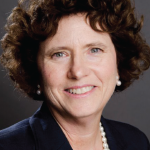A: I am honored. I enjoy teaching and feel like a proud parent when my students graduate, pass the national exam and become occupational therapists. It is especially rewarding when I hear about the excellent programs they develop as therapists, and when they begin to supervise the next generation of therapists in clinical experiences.
Q: What moment stands out the most with regard to your career in education?
A: September 2013: the UNM Occupational Therapy Program had its 20-year reunion. I am proud to say that I taught every one of our graduates—and I knew them all by name.
Q: You’ve been involved with the ARHP in a variety of volunteer capacities and committees. What has that meant to you professionally and personally?
A: Professionally, through ARHP, I have had the opportunity to be part of an interdisciplinary group of professionals, which gives me a broader perspective. ARHP and ACR have been important for networking with rheumatologists and health professionals with expertise in scleroderma. Personally, I have developed long-term friendships.
Q: What advice do you have for the next generation of rheumatologists?
A: Refer your patients to occupational therapists.
ARHP Distinguished Scholar Award

Dorothy Dunlop, PhD
Professor of medicine-rheumatology, Center for Healthcare Studies, Institute for Public Health and Medicine and Preventive Medicine, Northwestern University, Chicago
Background: Industry or medicine? It was a toss-up for Dr. Dunlop. She might have had a long and distinguished career working for companies like FedEx or Southwest Airlines after teaching statistics at Northwestern, earning her PhD in industrial engineering in 1990 and authoring a statistics textbook. But something just didn’t click—that is, until she ventured into the “ultimately more compelling” world of medical research.
“My dissertation actually was done during the era that the AIDS epidemic started,” she says. “I’ve had different opportunities and perspectives than the person traditionally trained to be involved in medical research.”
In collaboration with rheumatologist Dr. Rowland (Bing) Chang, the research group has authored more than 50 articles on the role physical activity plays in preserving function for adults with knee osteoarthritis. NIAMS funding combined with an Osteoarthritis Initiative project allowed Dr. Dunlop to use accelerometers to monitor physical activity on more than 2,000 individuals. Currently, she is working to unravel the distinction between a sedentary lifestyle and insufficient physical activity.
“The lightbulb moment was the 2005 study with Dr. Chang,” she says. “We did not expect physical activity to have a stronger link to disability than major suspects like healthcare and disease profiles. The finding was unexpected, and it was also truly an opportunity. Those results changed the direction of what we were doing from broad risk-factor explorations to a focus on physical activity, how to intervene and what opportunities there would be to strategize and develop interventions.”



